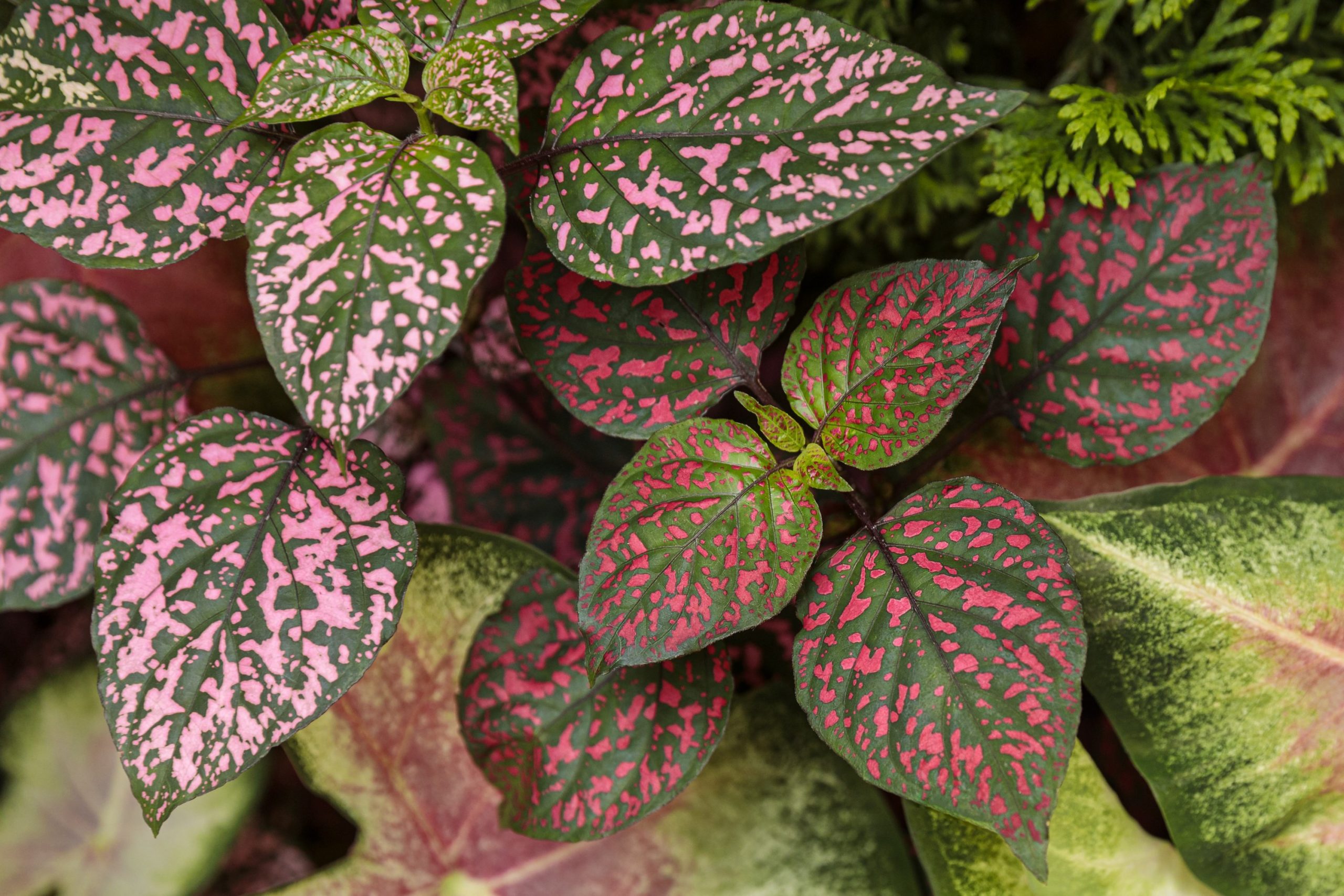If you’ve noticed fuzzy white hairs on the stems and new growth of your polka dot plant don’t be alarmed! This is completely normal for this popular houseplant. Those delicate hairs are nothing to worry about.
The polka dot plant (Hypoestes phyllostachya) is an ornamental houseplant native to Madagascar. It’s grown for its brightly speckled foliage in shades of white, pink, red, and green.
Fuzzy stems are most noticeable on young polka dot plants and new growth But even mature plants may retain some fuzziness on parts of the stems
Here’s a closer look at the fuzzy hairs on polka dot plants, and why they are not a cause for concern:
Normal Fuzzy Growth
The fine white hairs that emerge on polka dot plant stems and undersides of leaves are called trichomes. They are perfectly natural structures that help protect the plant.
Trichomes defend against insect pests, temperature extremes, and sun exposure. They act like a natural sunscreen for the tender new growth.
So the fuzziness is actually beneficial for your polka dot plant! Those hairs signal healthy, vigorous new growth.
Typical on Young Plants
Fuzzy trichome growth is most prolific on juvenile polka dot plants that are less than 1 year old. Very young seedlings may appear almost white at first.
As the plant matures over time, the trichome hairs become less noticeable. Older parts of the plant will take on the typical polka dotted appearance.
But even mature polka dot plants continue to produce some fluffy new stems with fuzzy trichomes as they grow. This is perfectly normal.
More Obvious on Certain Varieties
Some polka dot plant varieties are more prone to trichome growth than others. Fuzziness is especially common on these popular varieties:
- ‘Freckles’ – Heavily speckled foliage, prolific trichomes
- ‘Pink Splash’ – Pink-speckled leaves, remains fuzzy
- ‘Red Racer’ – Red splotched leaves, very downy
- ‘Lilac Splash’ – Lilac spotted leaves, fuzzy growth
So if you notice abundant fuzziness on your variety, it’s likely just characteristic of that cultivar.
Proper Care Minimizes Fuzz
While trichomes are normal, you can minimize fuzziness by providing optimal care:
- Bright indirect sunlight
- Warm temperatures between 65-80°F
- Moderate humidity around 50-60%
- Rich, well-draining potting mix
- Consistent watering when top inch of soil is dry
Poor growing conditions and stress can cause your polka dot plant to produce more trichome hairs. So keeping it happy and healthy helps reduce fuzziness.
When Fuzziness is a Concern
Occasionally, excessive trichome growth combined with stunted, malformed leaves can signal a problem.
This may be caused by:
- Overly dry soil leading to drought stress
- Extremely low humidity causing leaf damage
- Lack of nutrients due to poor quality potting mix
- Pests like spider mites feeding on the plant
So while fuzziness on a polka dot plant is usually normal, keep an eye out for any other signs of unhappiness. Address watering issues, increase humidity, fertilize lightly, or treat pests if needed.
Caring for Your Fuzzy Polka Dot Plant
Here are some tips for properly caring for your fuzzy-stemmed polka dot plant:
- Provide bright indirect light to encourage healthy growth.
- Water thoroughly when the top 1-2 inches of soil become dry.
- Mist leaves regularly and provide moderate humidity.
- Use a rich, high quality potting mix that retains moisture but drains well.
- Fertilize monthly in spring and summer with a balanced liquid fertilizer.
- Prune leggy stems just above leaf nodes to encourage bushier growth.
- Watch for pests like mites or mealybugs and treat any infections promptly.
Enjoy the Fuzz on Your Polka Dot Plant!
When you notice those cute, tiny hairs on your polka dot plant, rest assured it’s perfectly natural. The fuzziness is not harmful – just a sign of vigorous growth. With proper care, you can minimize trichome development. But a little fuzz on those brightly speckled stems is normal for this charming houseplant!
Houseplant Trends 2021: Most Tempermental: The Polka Dot Plant (Hypoestes Phyllostachya) Care + Tips
FAQ
Why does my polka dot plant have white fuzz?
What is the fuzzy stuff on my plant stem?
What to do with Leggy Polka Dot Plant?
What is the fungus on my polka dot plant?
What does a polka dot plant look like?
Polka dot plants generally feature a red, pink, or white flush on foliage. They should not have brown edges or spots. Brown leaf tips are also a problem as are brown watery lesions on leaves Polka Dot Plant crispy leaves that are dry and brittle are a red flag that something is wrong.
Why do polka dot plants have variegated leaves?
The variegated leaves of polka dot plants can vary on each leaf. It’s not uncommon for some leaves to have fewer speckles than others or even none at all. It can be caused by genetic factors or the growth stage of the plant, but it may also be an indication that the plant isn’t receiving enough light.
Is polka dot a perennial?
Botanically known as the Hypoestes Phyllostachya is an herbaceous perennial belonging to the Acanthaceae family. This ornamental plant with its splash of color and delightful patterns brightens every décor. So, when foliage begins to suffer, and your plant looks bad, alarm bells go off. Is my polka dot dying?
Do polka dot plants fade?
The leaf spots will fade if you place them in strong, direct light, while keeping them in complete shade will have the same effect on the dots. That’s why, as part of our polka dot plant care guide, we recommend keeping it in bright, indirect light.
- A Complete Guide to Caring for Yuki Cherry Blossom Shrub - January 23, 2025
- Identifying Red Hot Poker Seeds: What to Look For When Harvesting Torch Lily Pods - January 23, 2025
- A Complete Guide to Harvesting Evening Primrose Seeds - January 23, 2025

